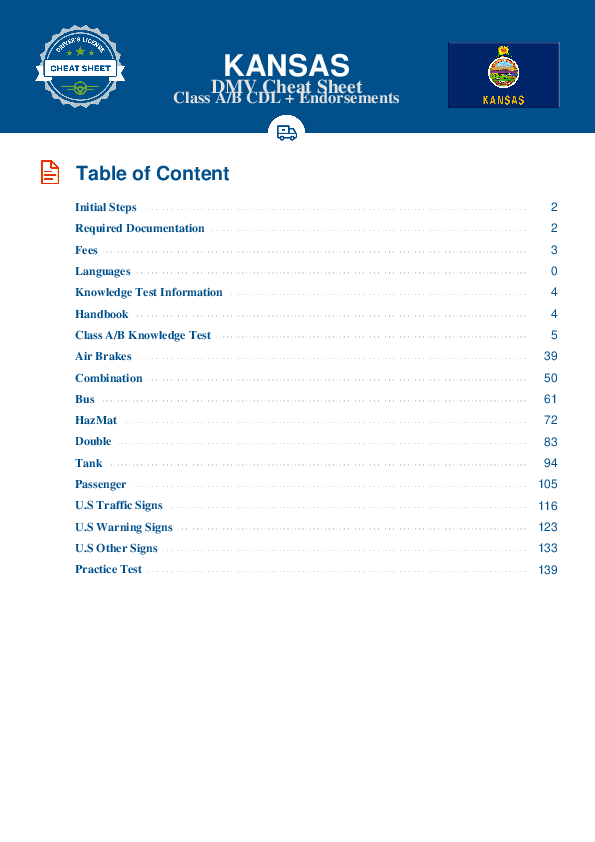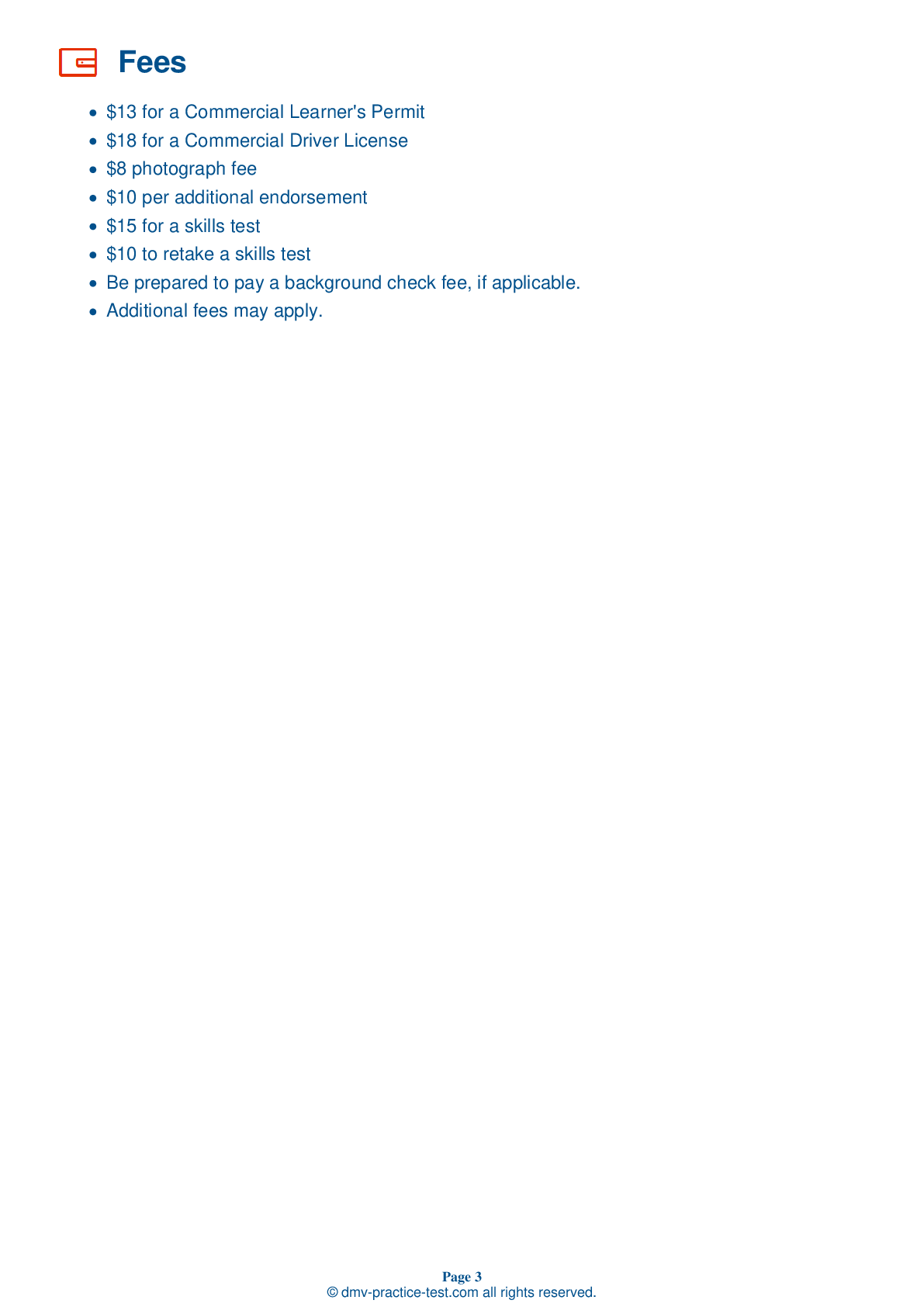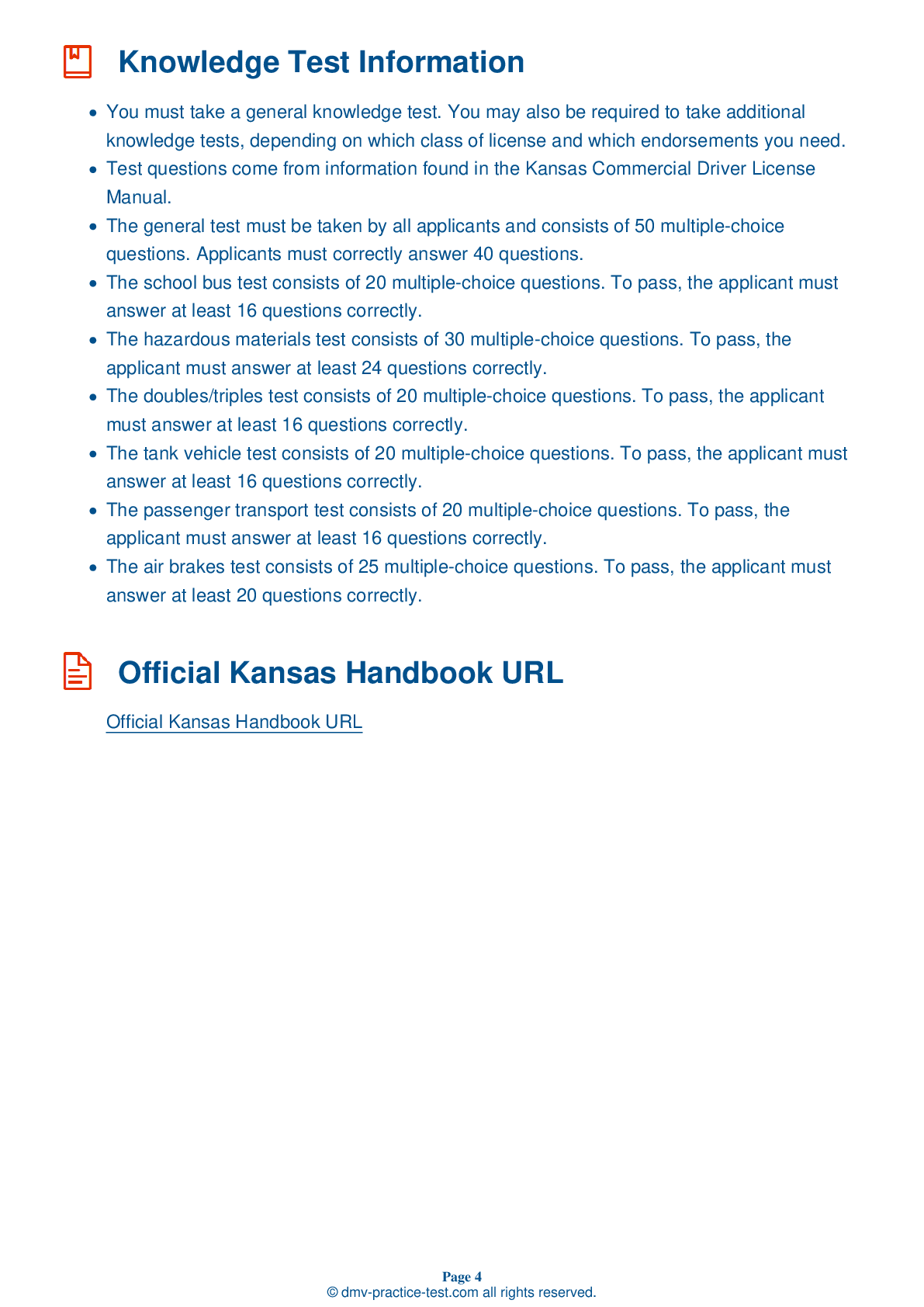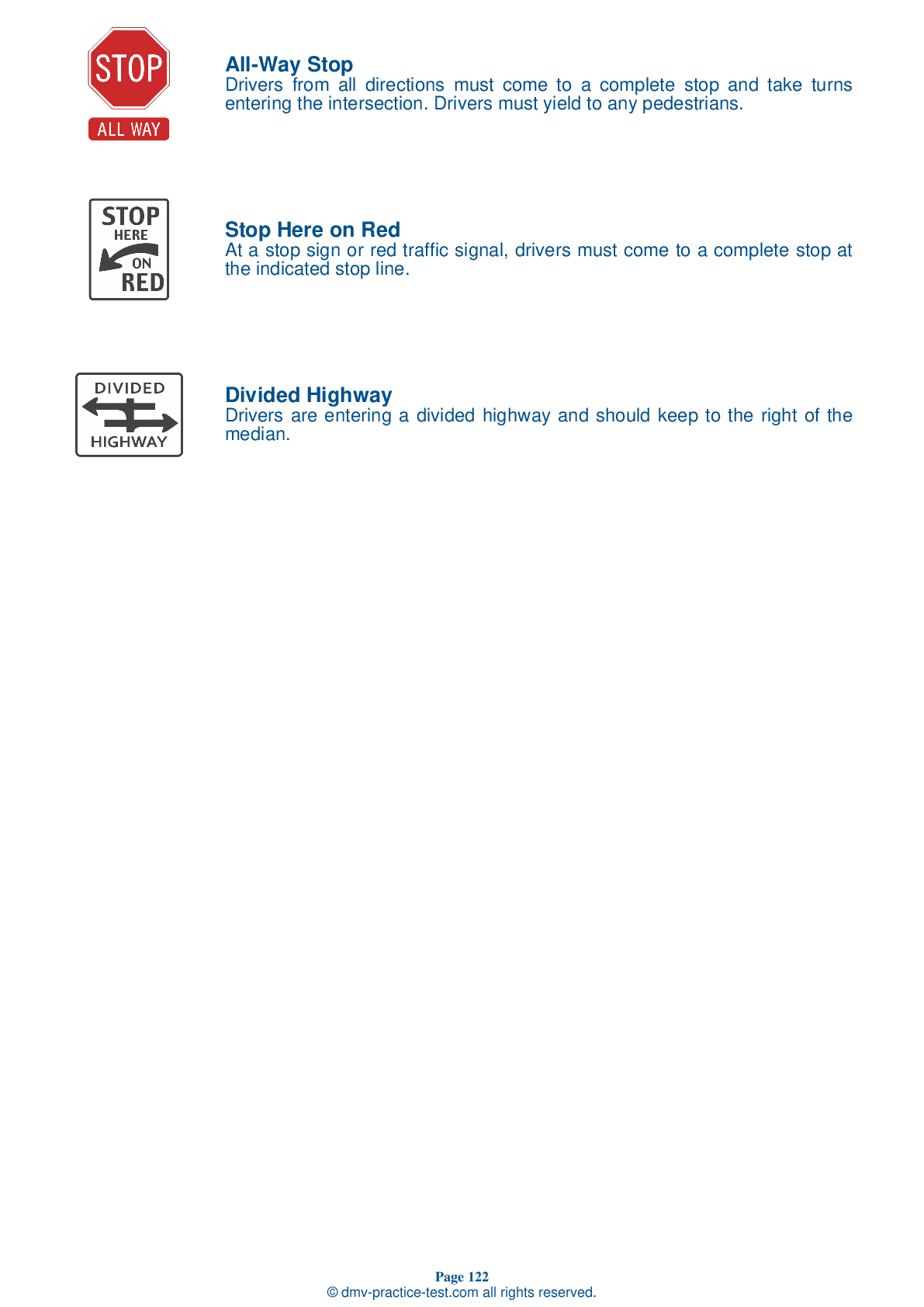Class B Driving Test | Kansas 2025 #2 Page 6 of 7
Train for FREE online with our Kansas class B license test. The official exam test consists of several obligatory parts, with all of them checking your knowledge of different blocks of road rules. If you need to obtain a KS CDL class B permit in 2025, practice as much as possible. Free sample tests published on our website will help you check and improve your knowledge and boost your grades. Please bear in mind that CDL class B requirements may vary from state to state.
36 . Hydroplaning usually occurs:
In places where water collects on the road, it is possible for a vehicle to hydroplane. Low tire pressure or worn tire tread makes this more likely to happen. If there is enough water on a road surface, hydroplaning can occur at speeds as low as 30 mph.
37 . A driver should always:
While driving, you should continually scan the road to spot potential hazards in advance. Make emergency plans for how to deal with the hazards if they become dangerous.
38 . If feeling sleepy while driving, you should:
If you begin to feel sleepy while driving, the only safe response is to stop driving and get some sleep. Attempting to fight off exhaustion is dangerous and a major cause of fatal crashes. Stimulants are not a safe solution because they may help keep you awake but will not make you more alert. Once stimulants wear off, you will be even more tired than you were originally.
39 . Before starting down a hill, be sure to:
Before starting down a hill, be sure to switch into a low gear. Gravity will increase your vehicle's speed as you travel downhill.
40 . Looking far ahead of your vehicle while driving is:
Good drivers look down the road at least 12 to 15 seconds ahead of their vehicles. This makes it possible to identify hazards early, when drivers are more likely to have time to respond appropriately.
41 . Areas of the road that are shaded:
Because they are exposed to less sunlight, shaded patches of road will stay cooler longer than other areas of the road. Due to the lack of direct sunlight, shady areas can remain icy and slippery after ice on other areas of the road has melted.
42 . What do anti-lock brakes do?
The function of an Anti-Lock Braking System (ABS) is to prevent the vehicle's wheels from locking up from hard brake application.
See the exact questions that will be on the 2025 Kansas DMV exam.
99.2% of people who use the cheat sheet pass the FIRST TIME
Lillian MCcranie explains how our CDL study guide was helpful in passing the exam and recommends it to everyone.
Cameron tells us how he purchased the CDL exam, and found it to be a useful tool which helped him pass the exam and find a job.



